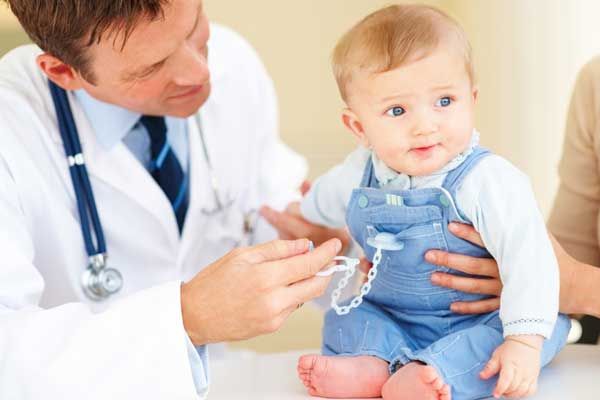Body Cooling Treatment Helps Oxygen-Starved Newborns

Babies with a life-threatening condition whose bodies are cooled shortly after birth as a treatment continue to benefit from the therapy years later, a new study suggests.
In the study of babies born with hypoxic-ischemic encephalopathy (HIE), a condition in which the brain does not receive enough oxygen, those who received the body-cooling treatment were more likely to survive to ages 6 and 7 than those who did not receive the treatment, the study found.
In addition, the treatment did not appear to increase the risk of harms later in life — babies who received body cooling were no more likely to have physical disabilities or low IQ scores in early childhood, the researchers said.
The study supports the findings of earlier research that the cooling treatment decreased the risk of death in infants with HIE. However, it is the first study to show these benefits persist in school-age children, the researchers said.
"Before the advent of this cooling treatment in 2005, doctors couldn’t treat HIE, and many infants died or sustained brain injury," said study researcher Dr. Seetha Shankaran, director of neonatal/perinatal Medicine at Wayne State University in Detroit. "It's reassuring to see that the benefits of this practice… are apparent as these children grow."
Life-threatening condition
Some infants' brains fail to get adequate oxygen either at delivery or a few hours beforehand. There are many possible causes, including rupture of the uterus and compression of the umbilical cord. As many as one in 1,000 U.S. births is affected by HIE, and in severe cases, the death rate can be 50 percent.
Sign up for the Live Science daily newsletter now
Get the world’s most fascinating discoveries delivered straight to your inbox.
Hypothermia, or body cooling, was widely adopted as an HIE treatment in neonatal intensive-care units around the world after a 2005 study found it reduced infants' risk of death and disability, Shankaran said. However, it was not known whether the treatment increased the risk of memory or IQ problems, which cannot be properly tested until children are older.
In the new study, Shankaran and colleagues analyzed information from 190 children with HIE, about half of whom were treated through hypothermia within six hours of birth. The researchers followed the children until ages 6 or 7.
Of those who received the hypothermia treatment, 28 percent died before age 7, compared with 44 percent of those who did not receive the treatment.
The treatment did not increase the risk of a low IQ (a score of less than 70). Rates of cerebral palsy, blindness and epilepsy were also similar between hypothermia-treated and -untreated groups.
Body-cooling benefits
The hypothermia treatment involves placing the newborn on a special plastic blanket that contains cool, circulating water. The cool water reduces the baby's body temperature to as low as 92.3 degrees Fahrenheit (33.5 degrees Celsius. Normal body temperature is 98.6 F, or 37 C). The reduced temperature is sustained for three days, and then returned to normal.
The treatment is thought to stop or slow the detrimental processes that usually occur when the brain is deprived of oxygen, such as brain swelling and cell death, thus preventing brain injury, Shankaran said, discussing the findings at a news conference.
The study will be published in the May 31 issue of the New England Journal of Medicine. It was funded by the National Institute of Child Health and Human Development.
Pass it on: Hypothermia treatment saves lives of infants with oxygen deprivation to the brain, and the treatment does not appear to increase the risk of cognitive impairment later in life.
Follow MyHealthNewsDaily staff writer Rachael Rettner on Twitter @RachaelRettner. Findus on Facebook.

Rachael is a Live Science contributor, and was a former channel editor and senior writer for Live Science between 2010 and 2022. She has a master's degree in journalism from New York University's Science, Health and Environmental Reporting Program. She also holds a B.S. in molecular biology and an M.S. in biology from the University of California, San Diego. Her work has appeared in Scienceline, The Washington Post and Scientific American.

'Love hormone' oxytocin can pause pregnancy, animal study finds

'Mini placentas' in a dish reveal key gene for pregnancy










